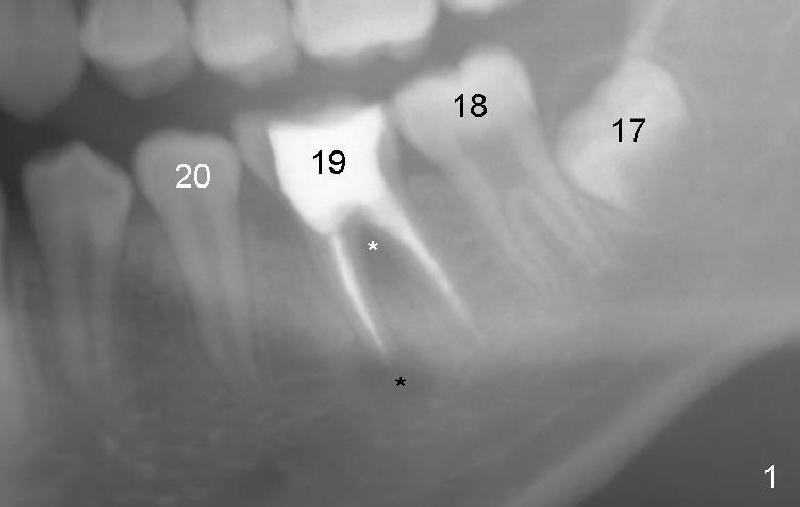
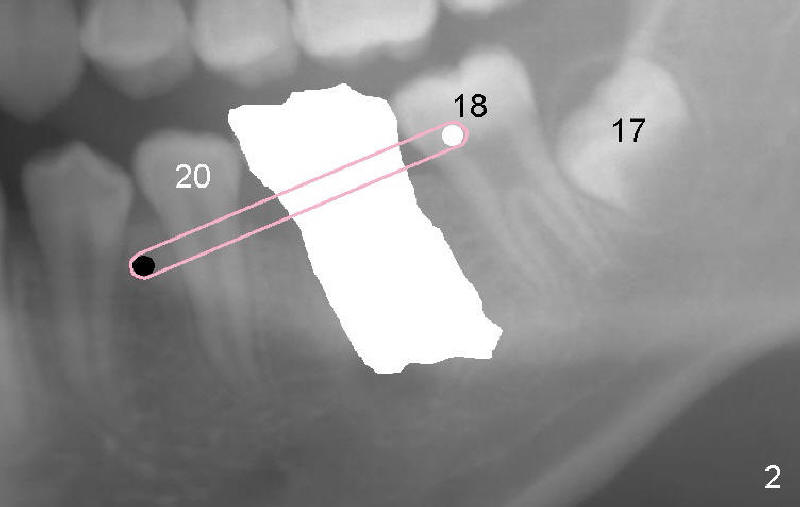

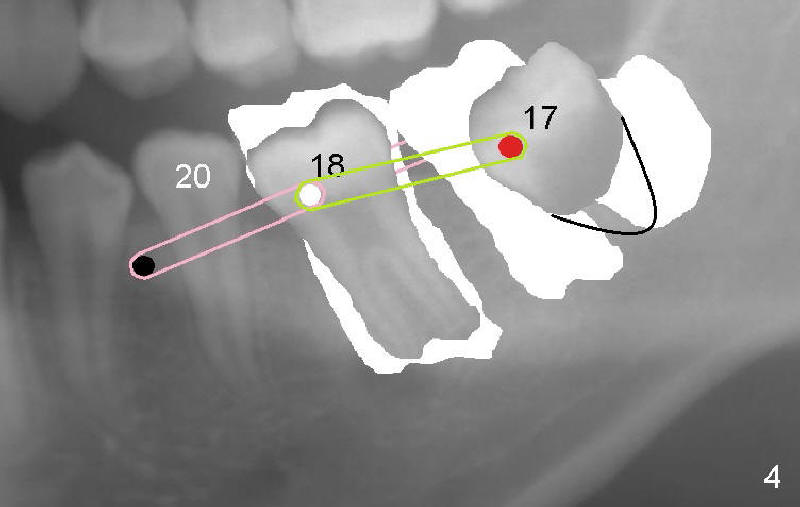
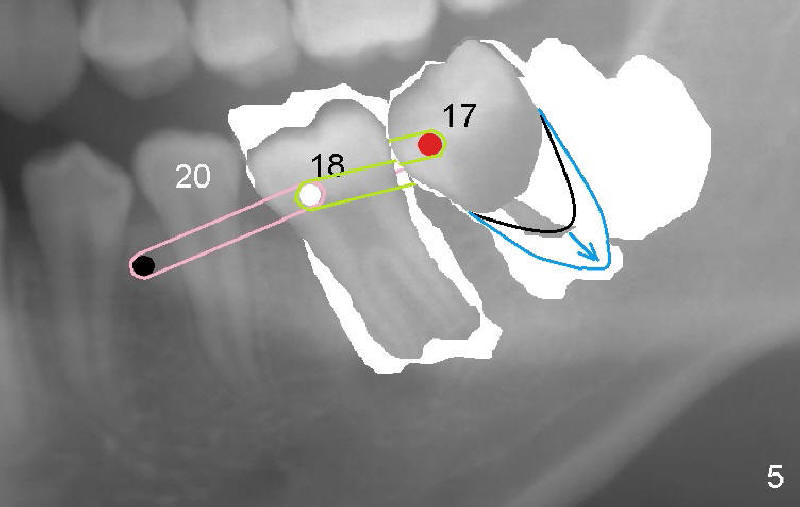
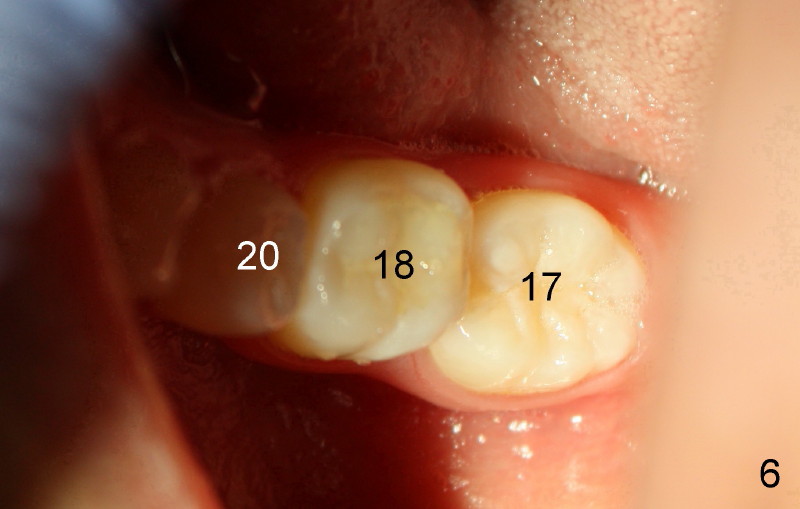
 |
 |
 |
 |
 |
 |
Use Braces and Mini-implant to Replace Missing Molar
Jessica is near 13 years old when one of her molars (#19, 1st molar, in Fig.1) has severe root infection (*) and has to be taken out. She is too young to have an implant for replacement. We recommend using braces and mini-implant to replace the molar to be extracted.
After extraction (Fig.2), she goes to see Dr. Ricci (an orthodontist, the doctor who uses braces to move teeth). The doctor places a mini-implant (black circle) in the front of a premolar (#20), a brace (white circle) in the back tooth (#18, 2nd molar and a rubber band (pink line) between the mini-implant and the brace.
Since the mini-implant is a fixed point, the 2nd molar moves forward slowly to the position of former 1st molar under the tension of the rubber band. Once the 2nd molar moves forward, the third molar (#17 in Fig.3, i.e., wisdom tooth) has more room to move around. For example, it erupts quicker (black arrow) due to its root development (black outline, as compared to #17 in Fig.1,2). Beside, the wisdom tooth also moves forward slightly. Finally a brace (red circle in Fg.4) is also placed on the wisdom tooth. A new rubber dam is used (green line).
Eventually, the third molar moves to area occupied previously by the 2nd molar (Fig.5). The root of the third molar (#17) become longer (from black outline to blue outline). Fig.6 shows clinical view of the teeth in the area. Jessica can chew normally now. Normally the third molar needs to be extracted when she is about eighteen.
Xin Wei, DDS, PhD, MS 1st edition 02/19/2012, last revision 02/28/2012